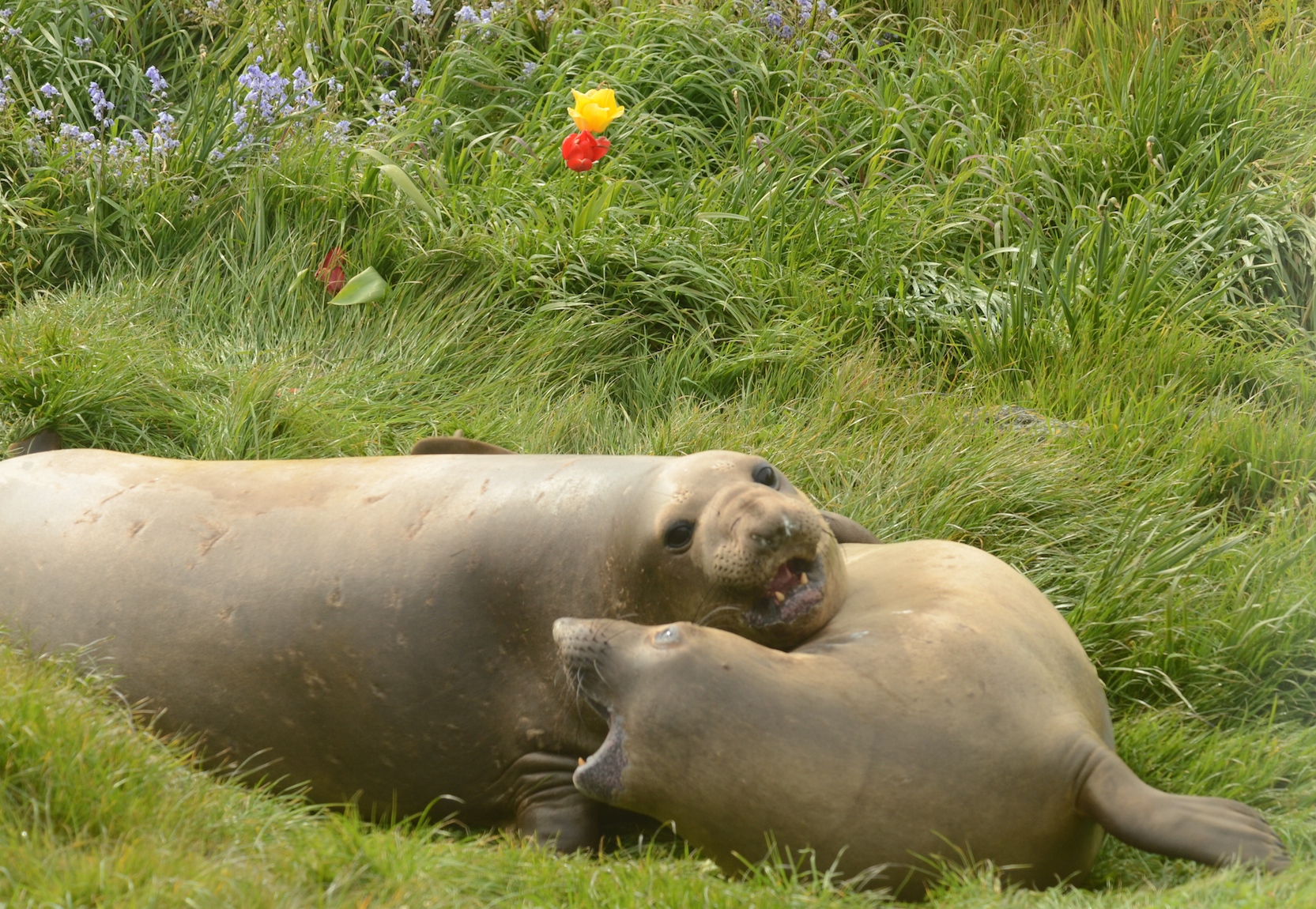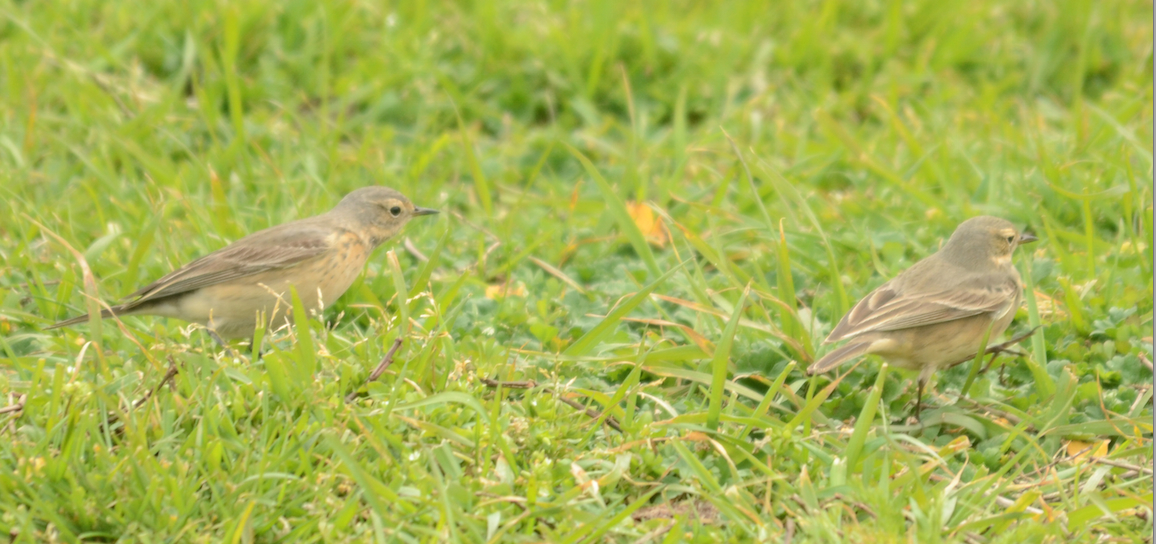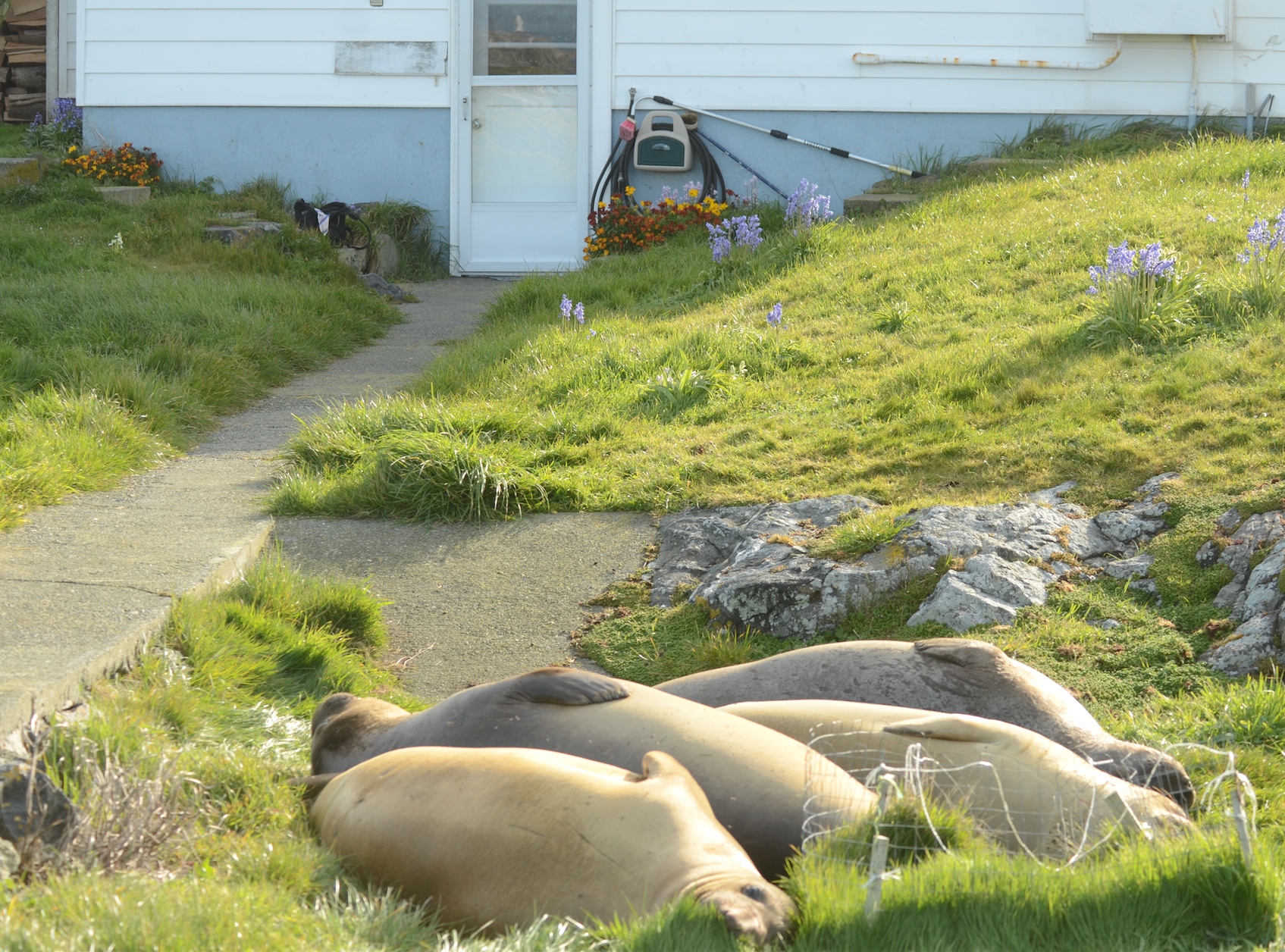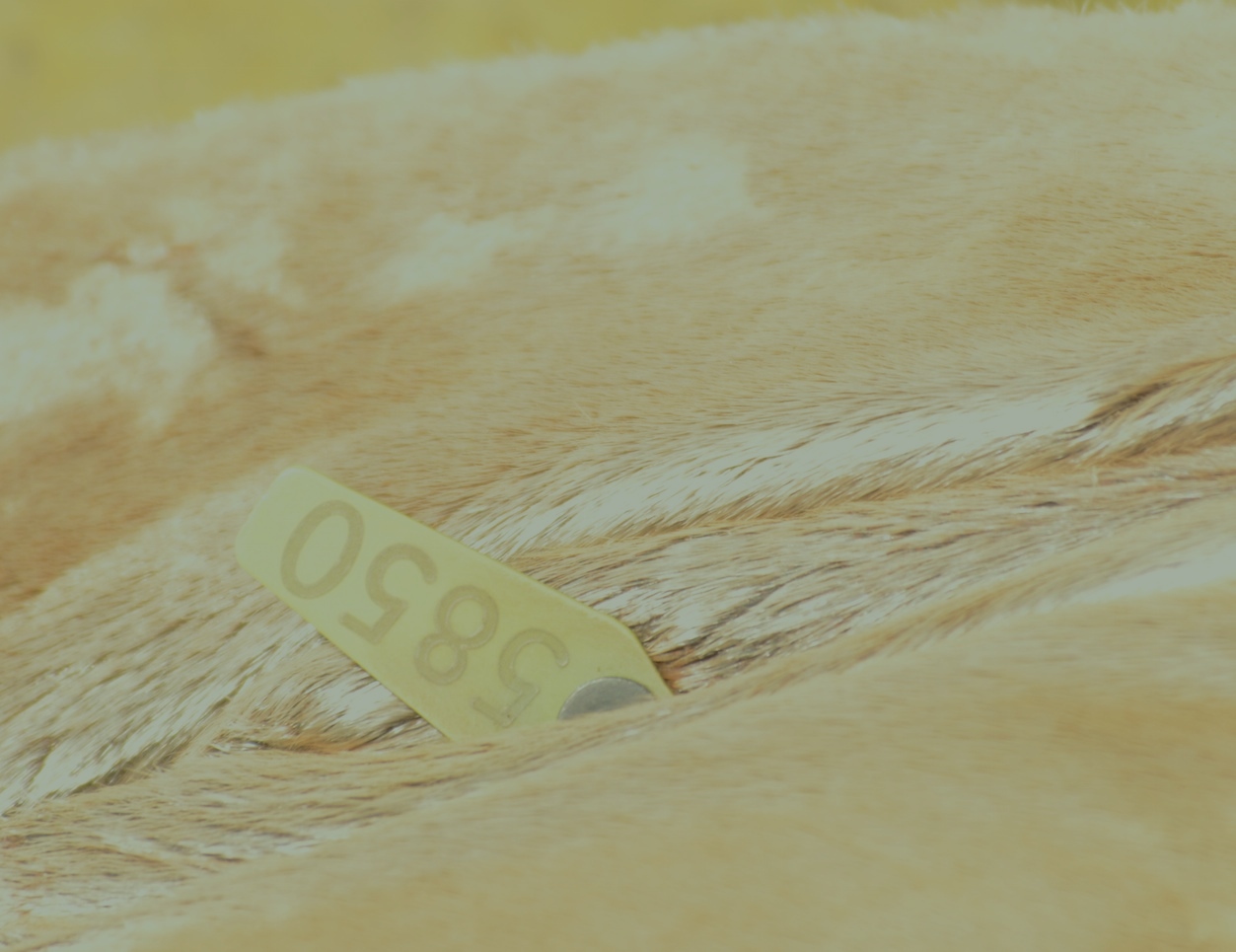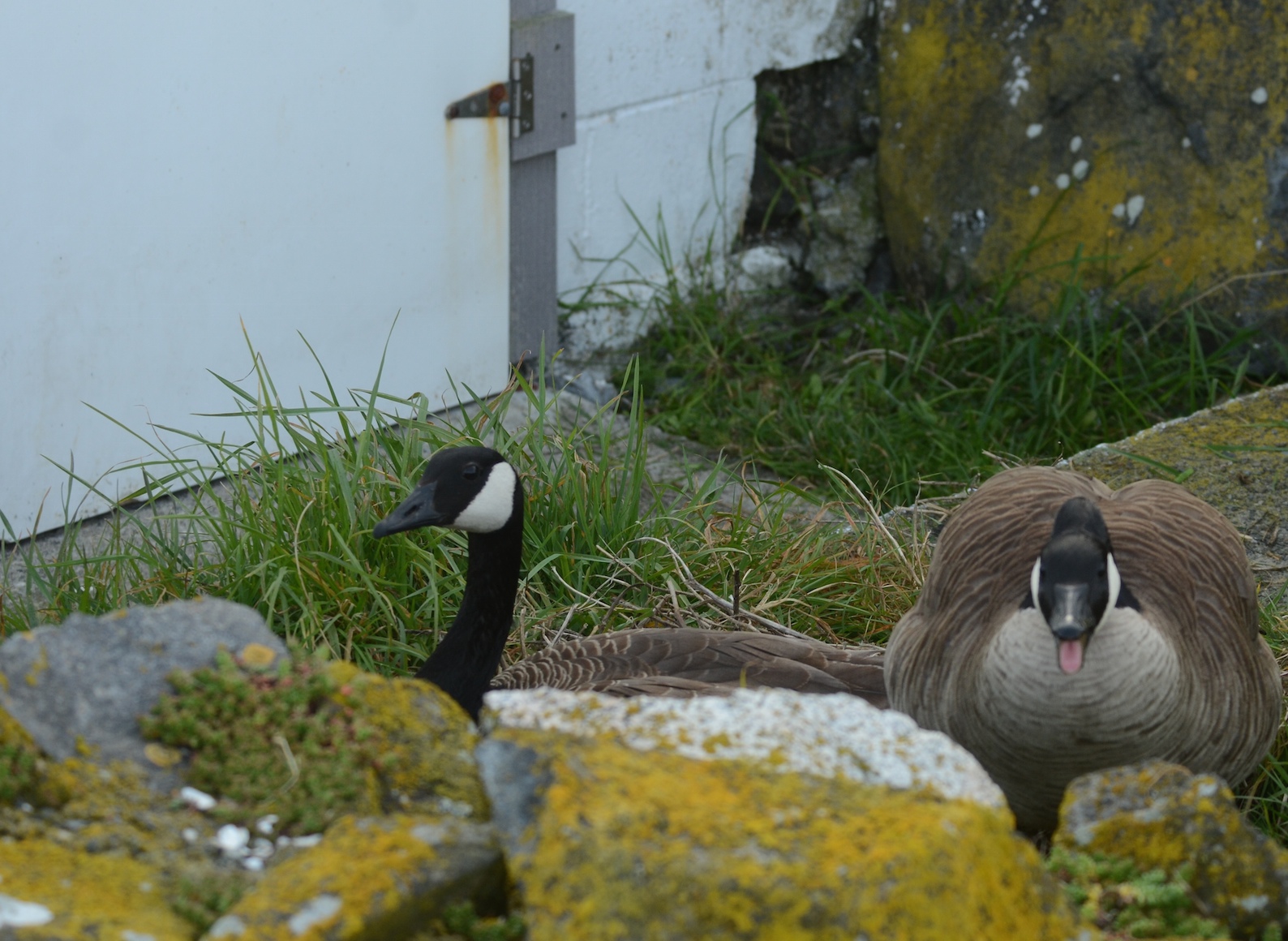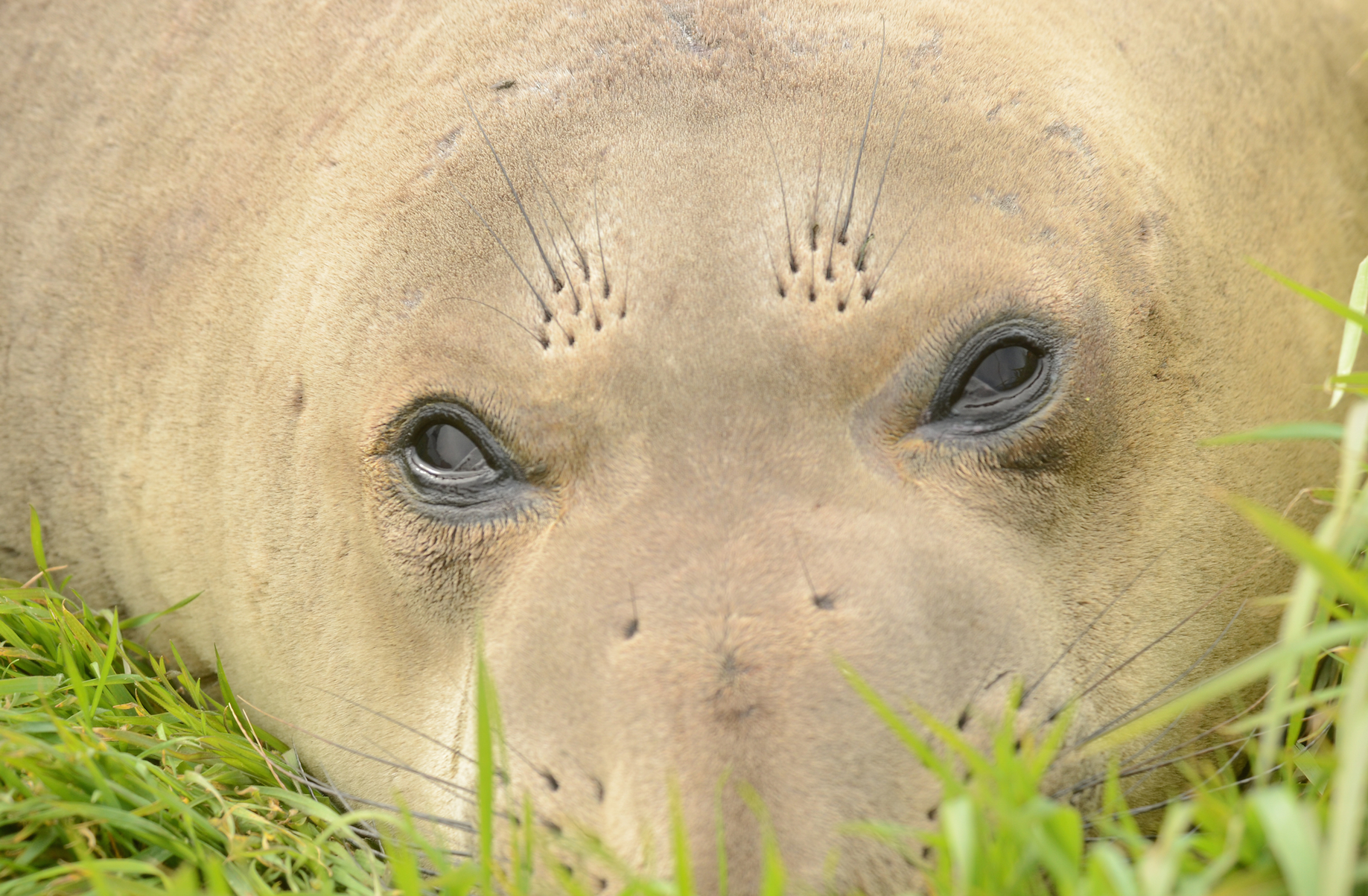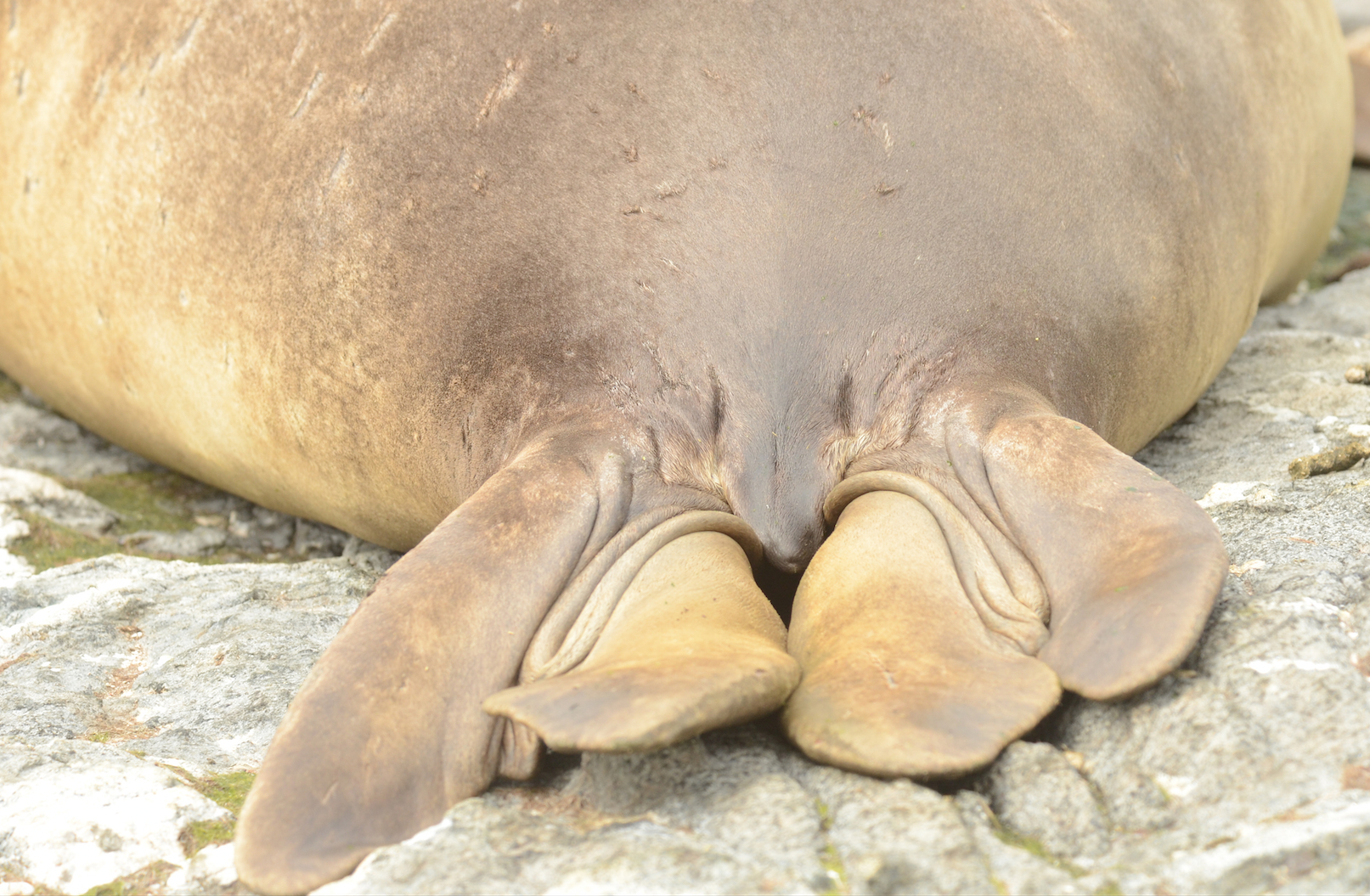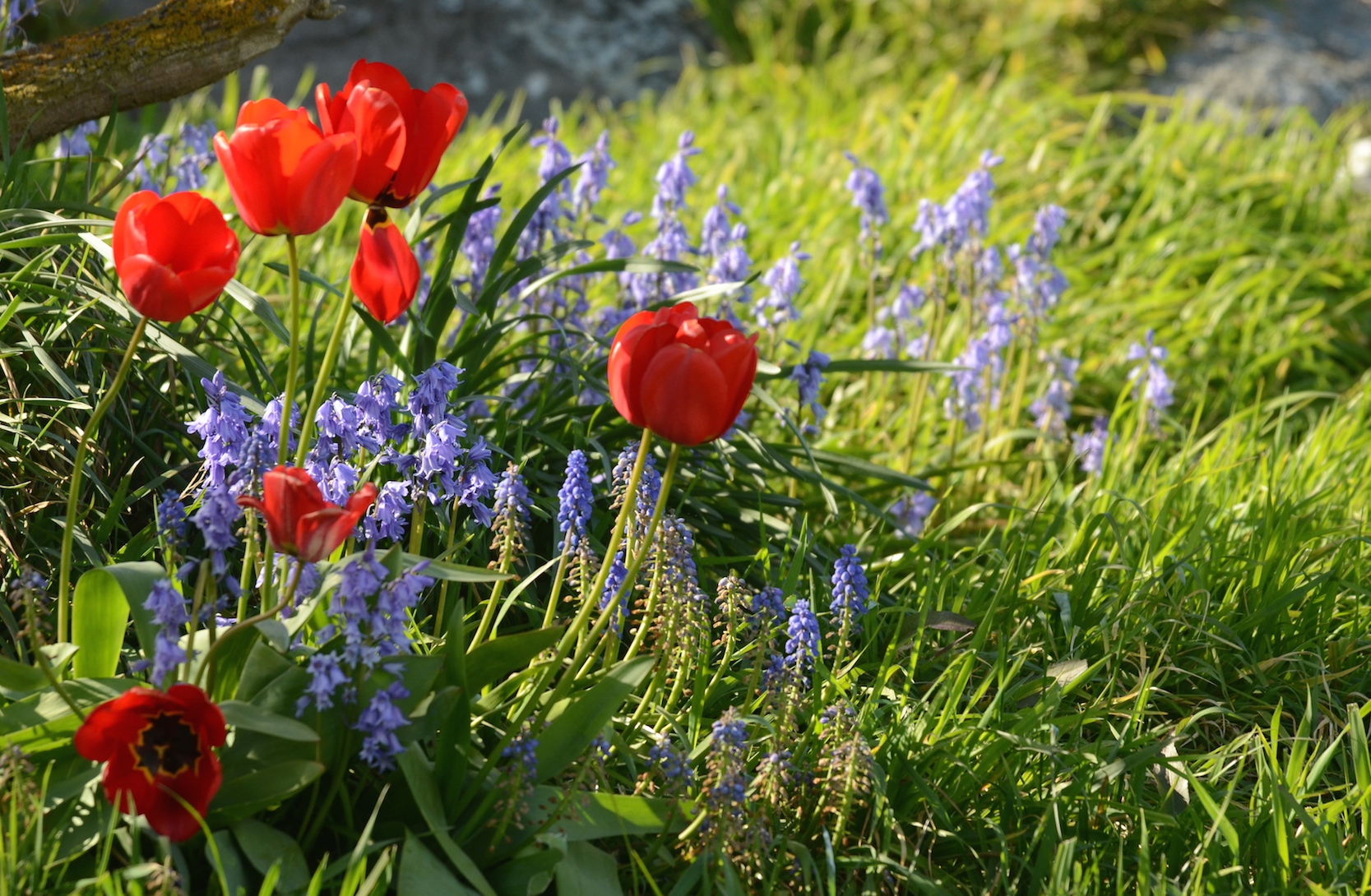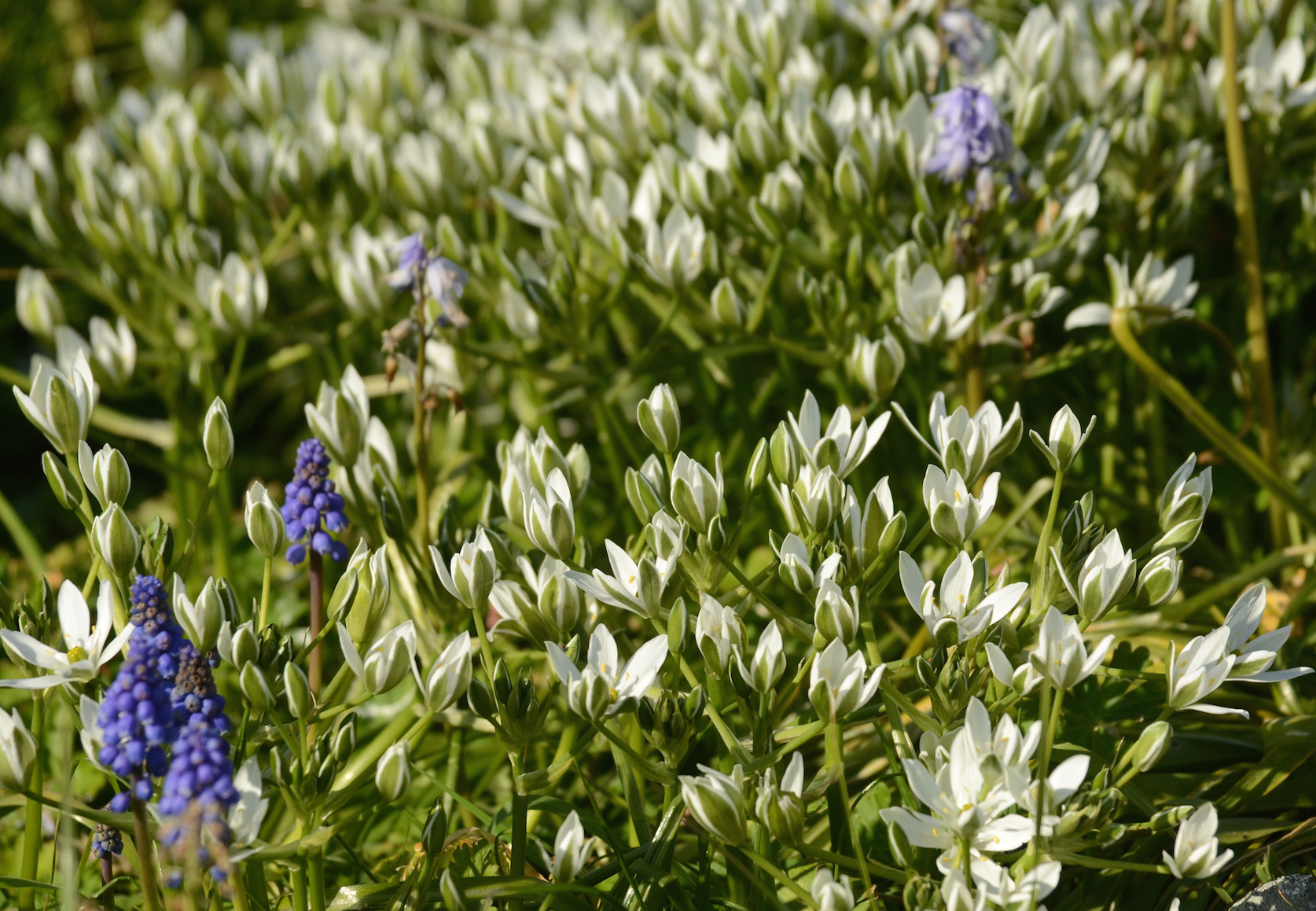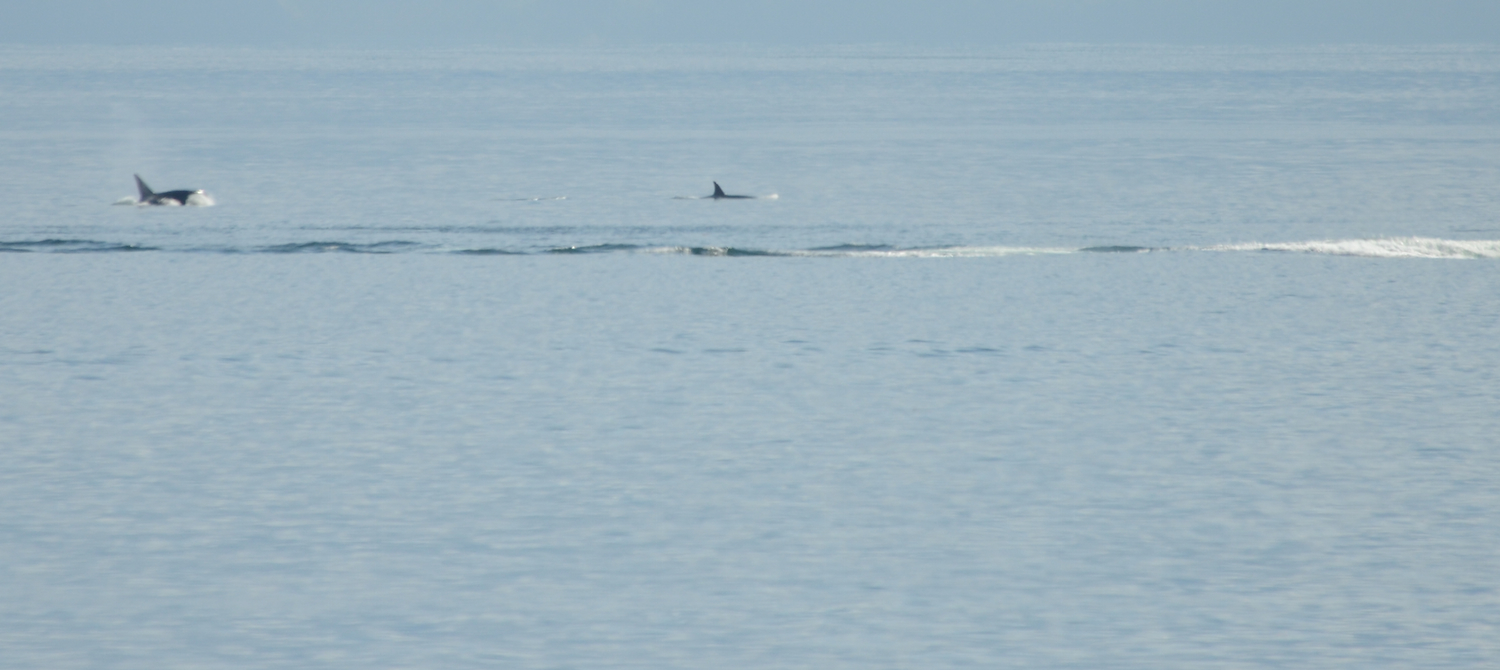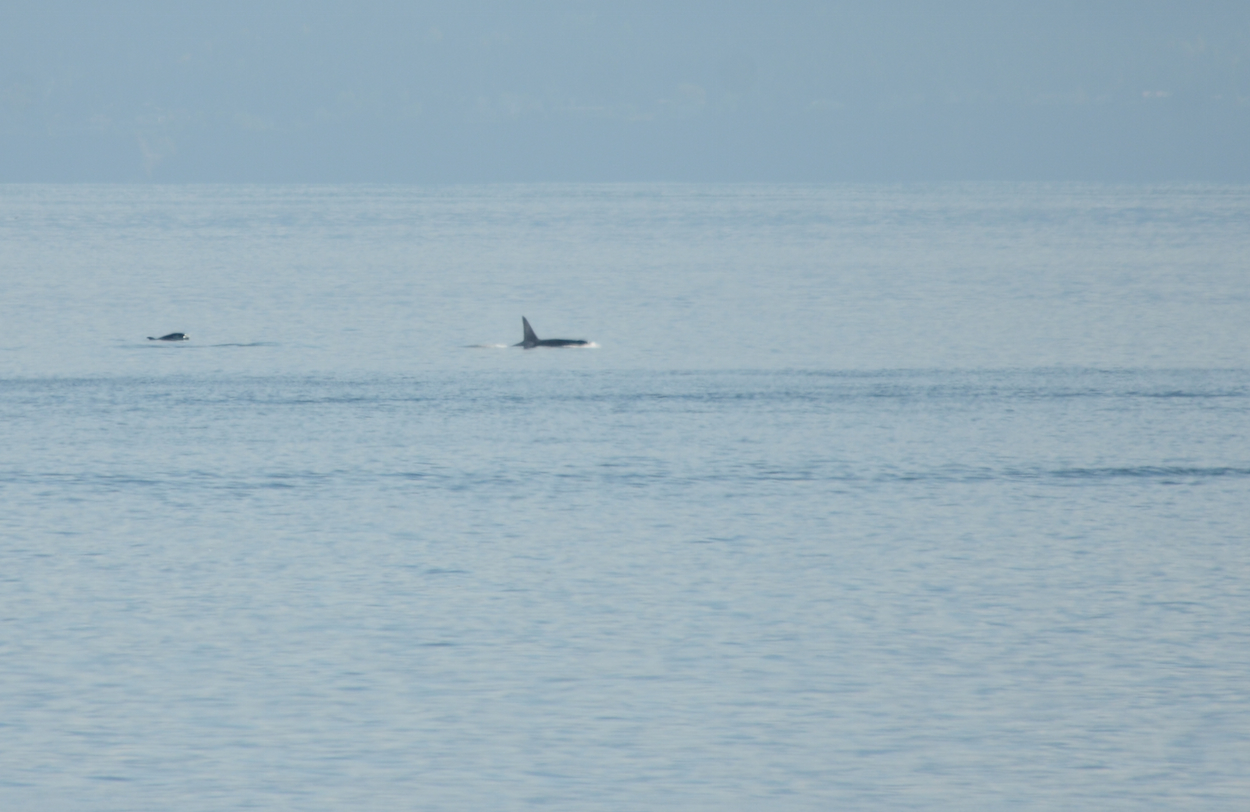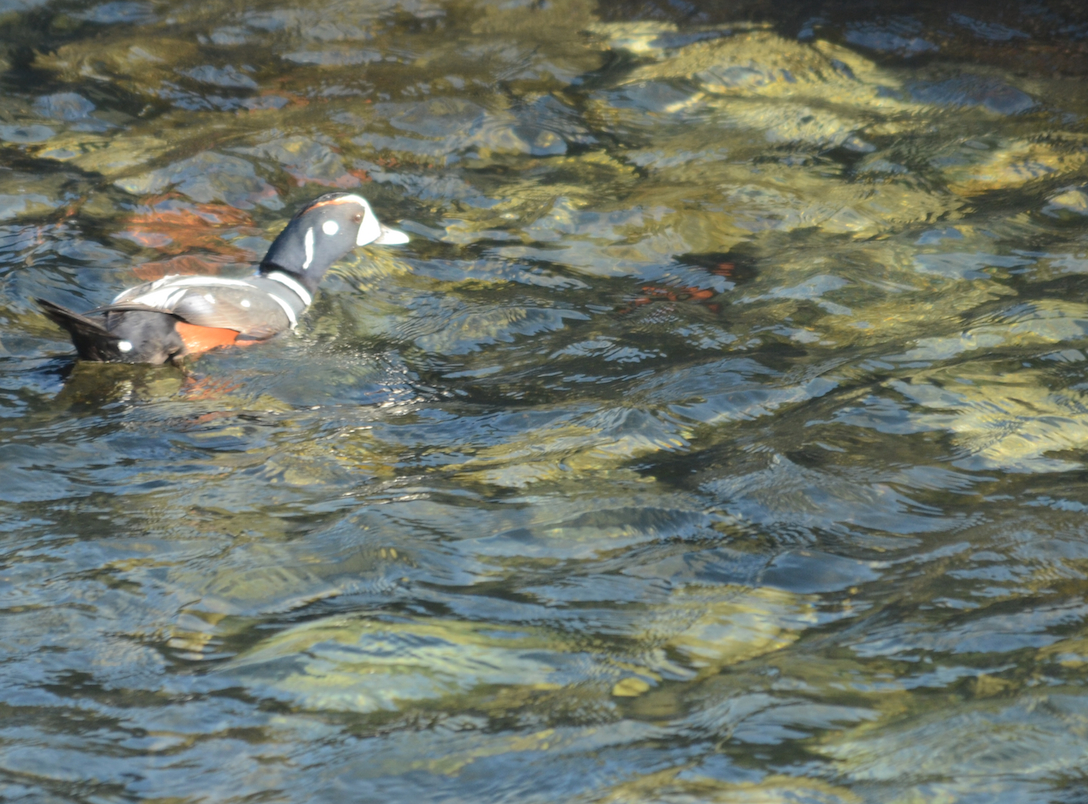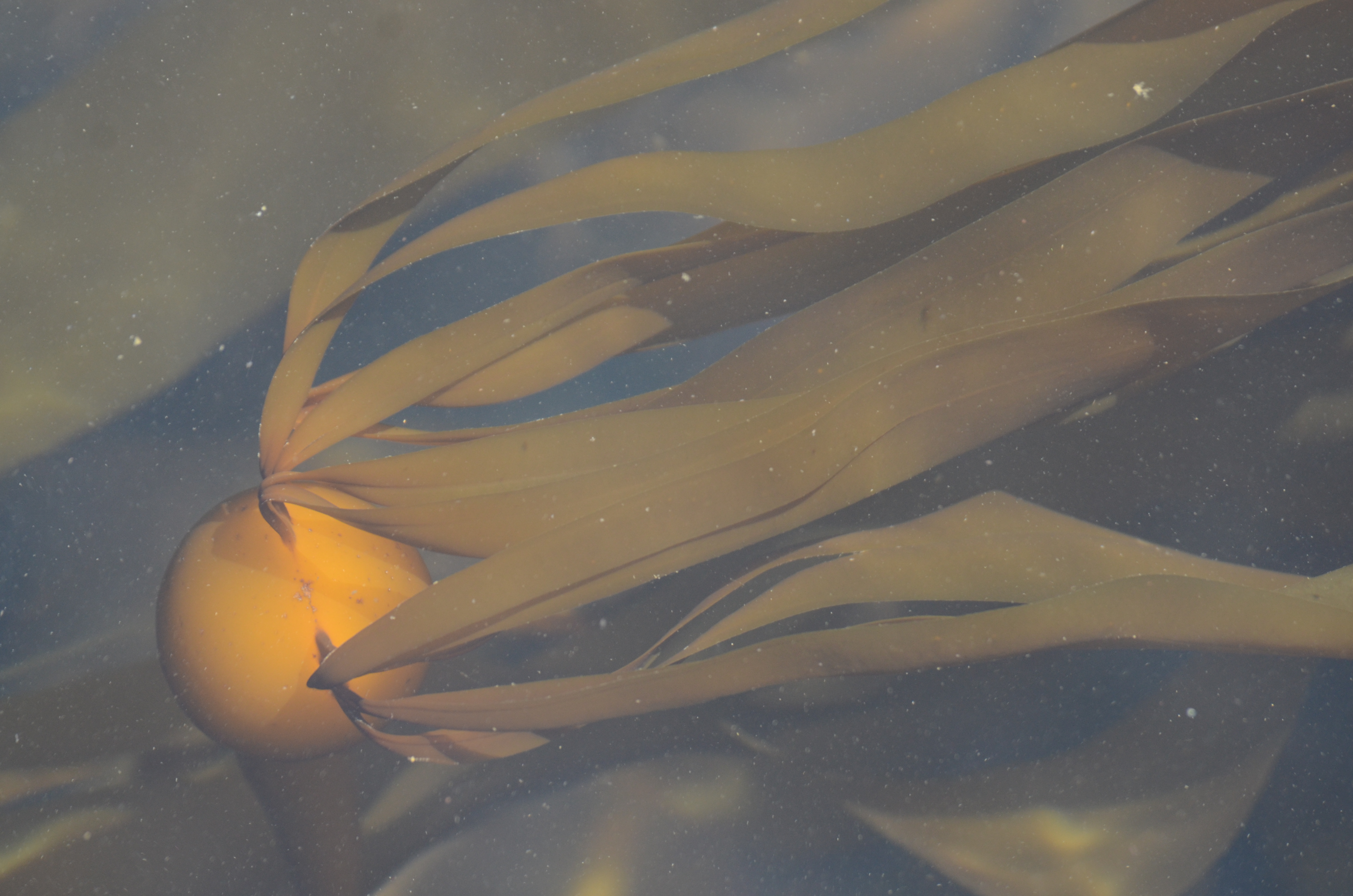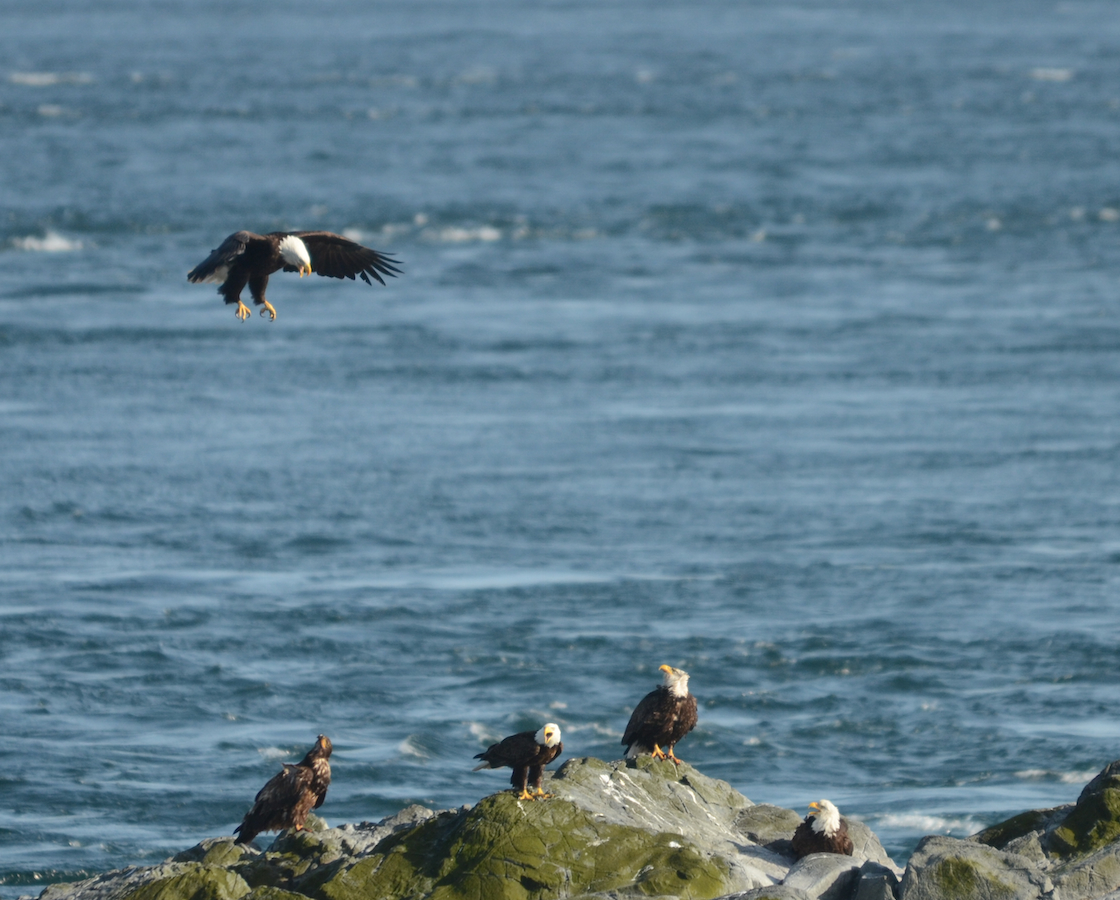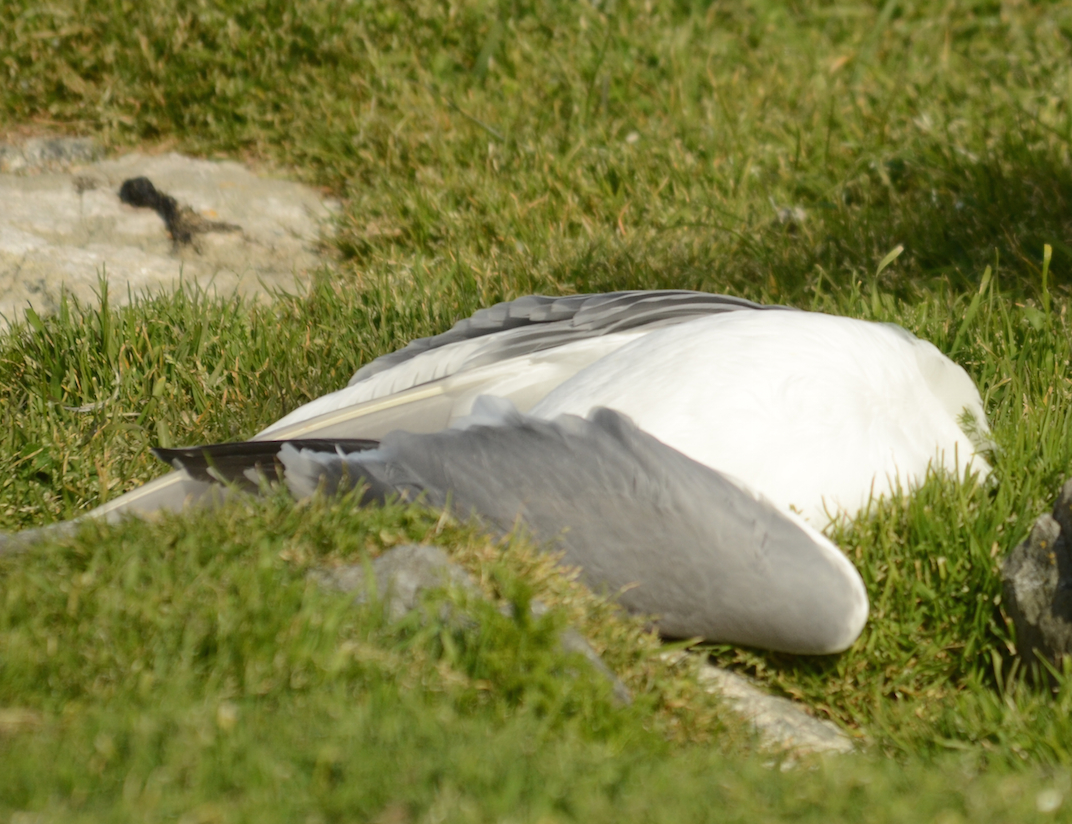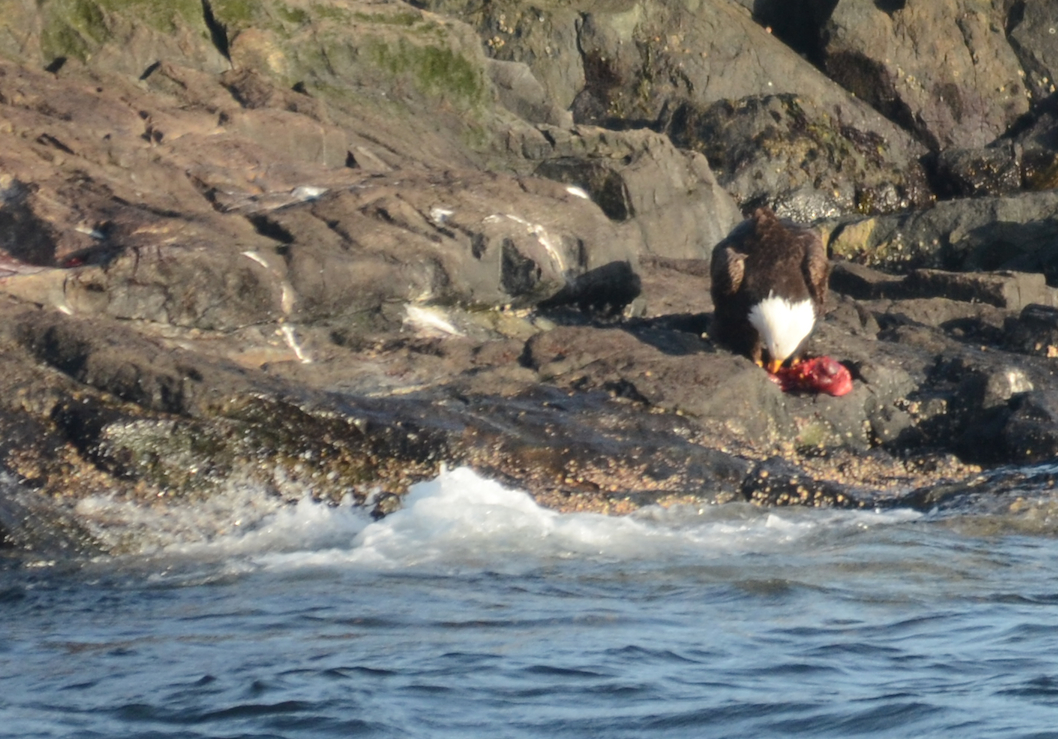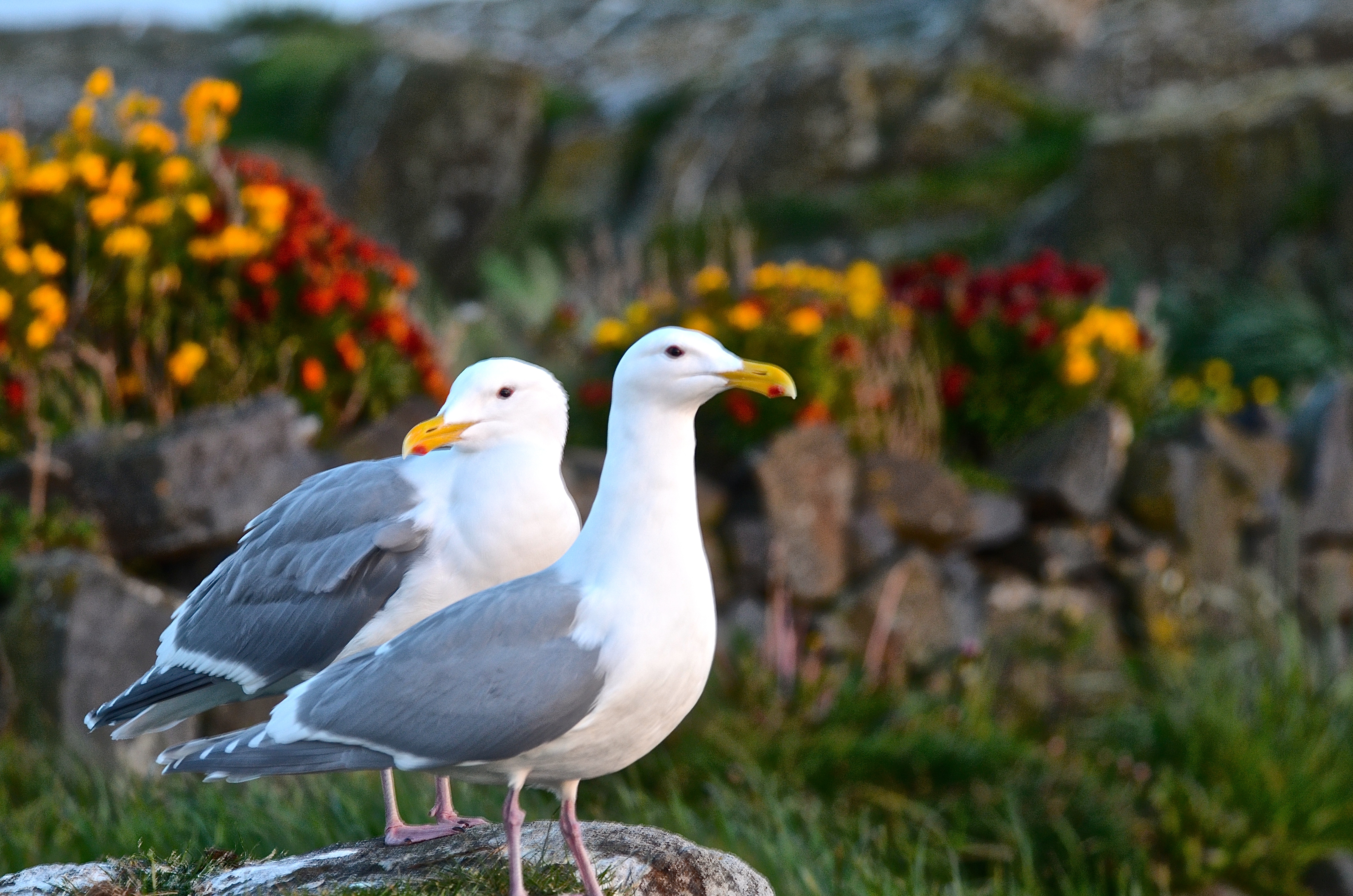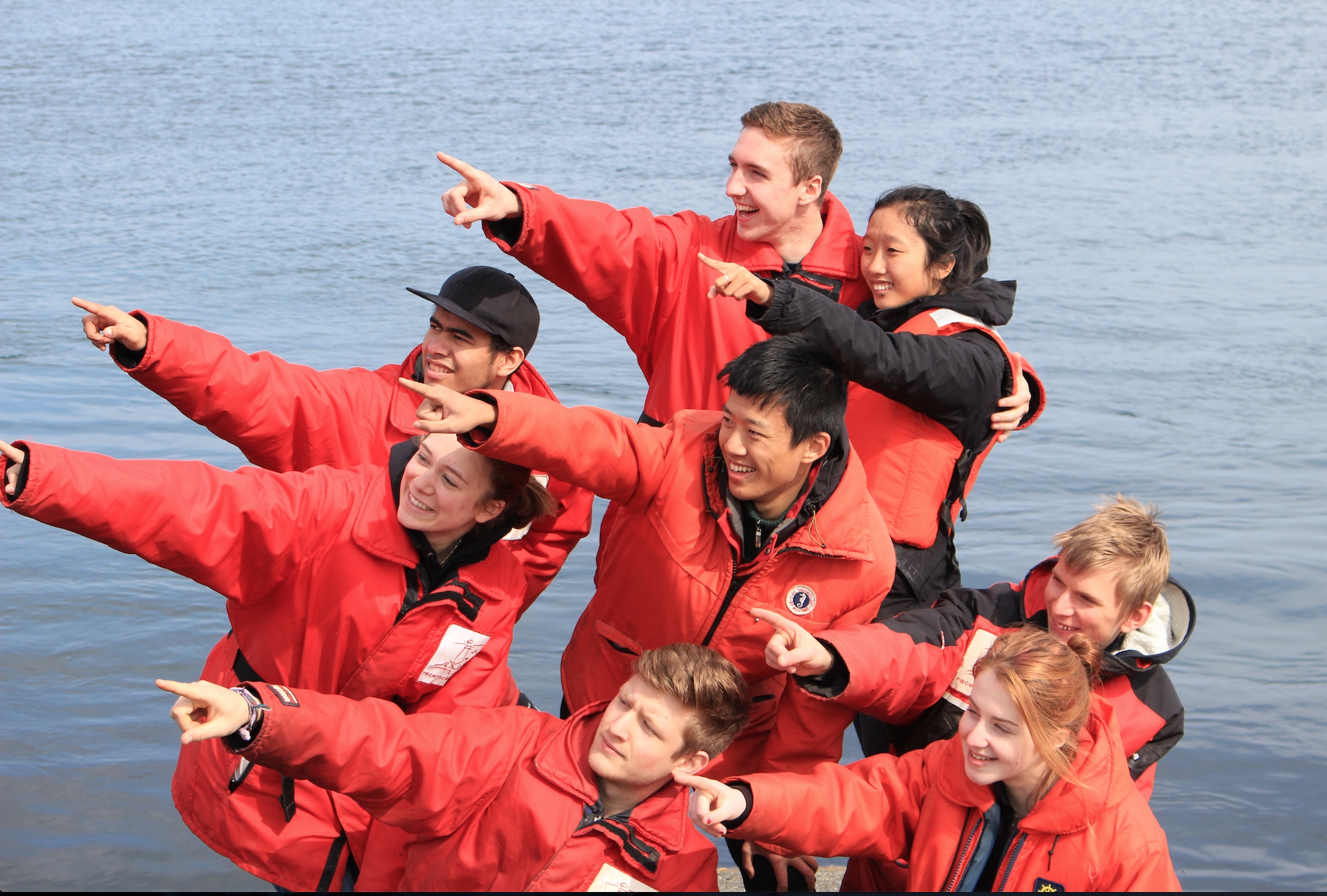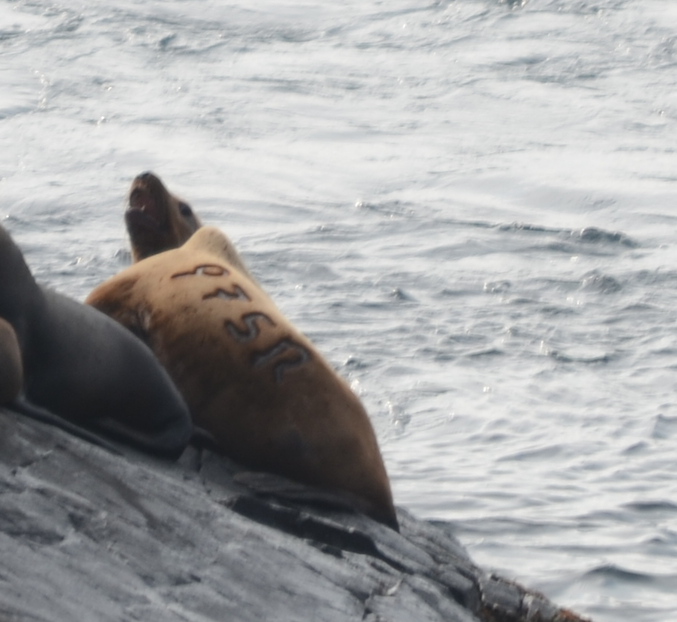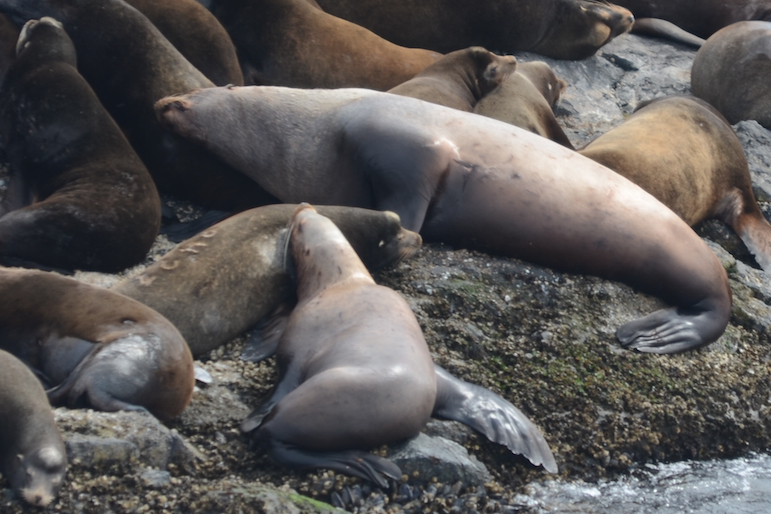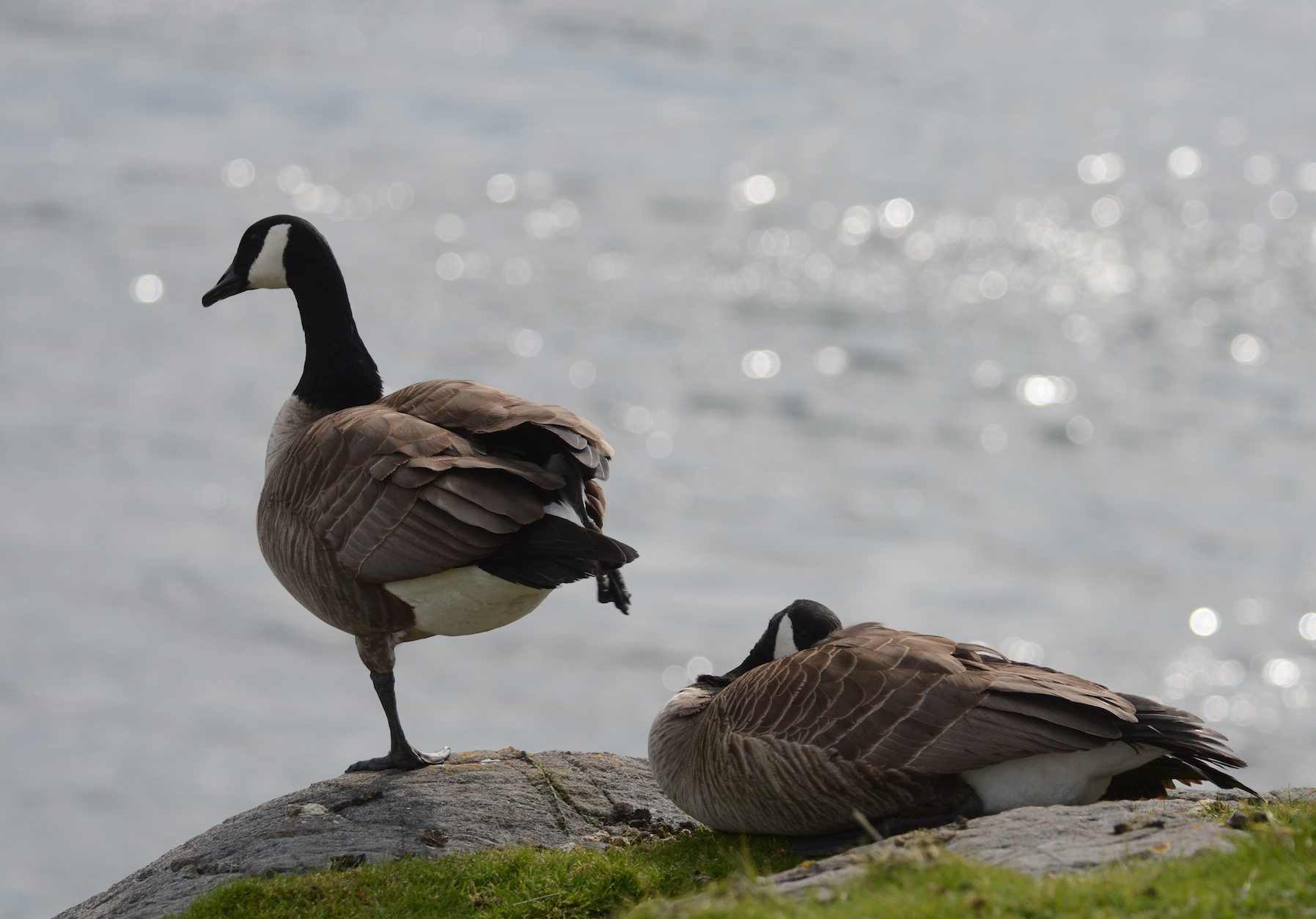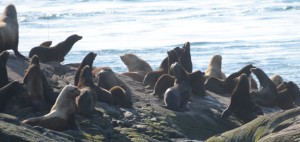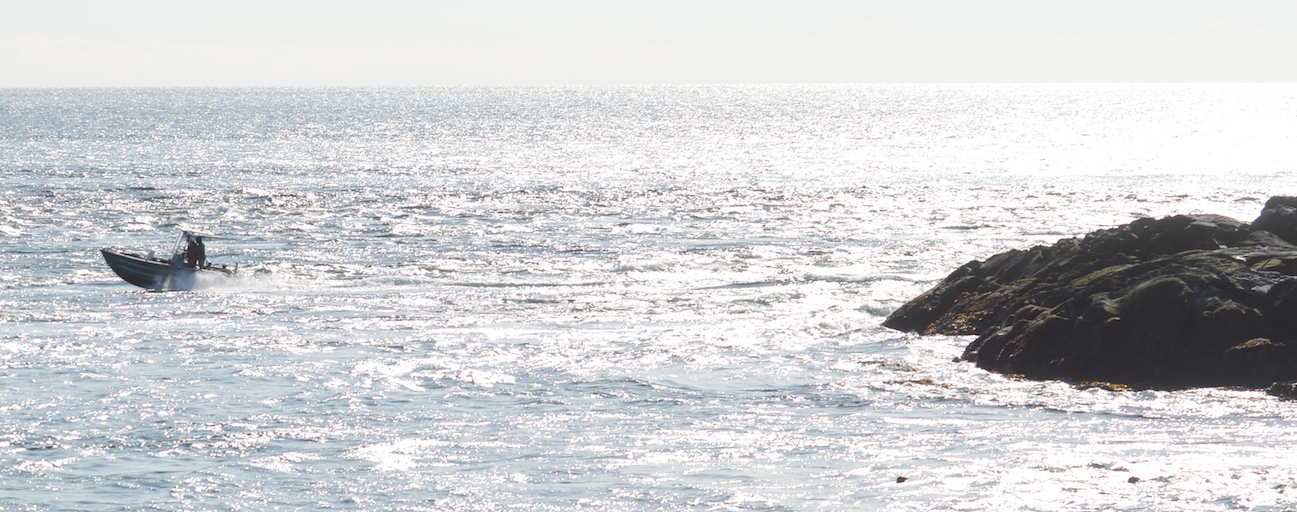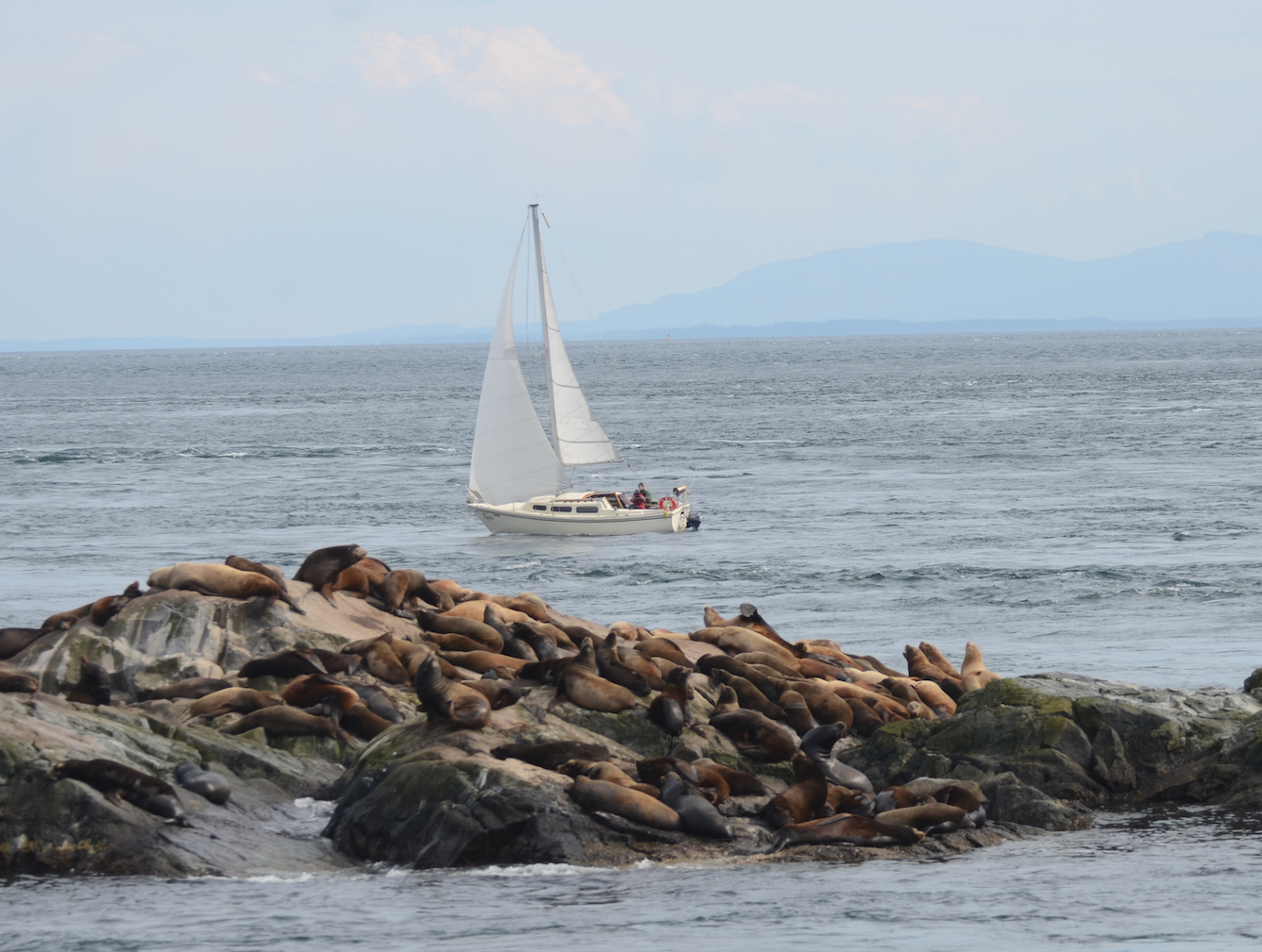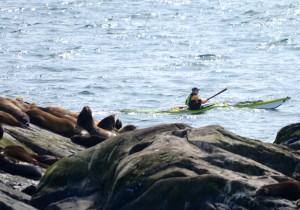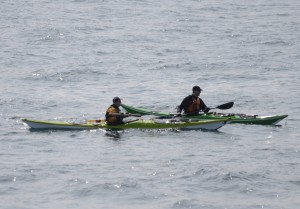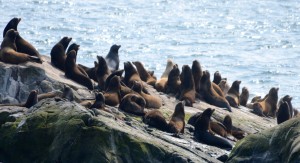It was a cold and blustery day with winds from the west-southwest, blowing 25 to 35 knots. It was also dark, with a cumulative solar radiation of only ~130 Langleys and a peak of less than 500 Watts/m2, which was half of yesterday’s high. The temperature was about 6o C most of the day but it felt much colder in the wind. The barometer bottomed out around noon and although the trend is rising it seems tentative. The forecast is calling for a little less of the same, with a gale warning for Central Juan de Fuca Strait and an expectation for westerlies to blow 25 -25 knots again by Tuesday evening.
In late afternoon there was one brave, little whale watching boat in the Ecological Reserve. No other vessels were noted in Reserve today.
The folks on the tour boat were watching the sealions on the south side. The sealions which are usually hauled out on the rocks there these days, were almost all hanging out in the water where it was a few degrees warmer than the air and even cozier for a wet animal in the wind.
The lawn was freshly crushed, by four Northern Elephant Seals today. It certainly beats mowing. All but the one with the skin condition woke up after a profound 33 hour sleep to “romp” in the grass. The two young males sparred and a larger male and female practiced for parenthood. They all conked out after about three hours of activity and are now back into deep sleeps. The tagged one (5850) left yesterday afternoon and was not seen today.
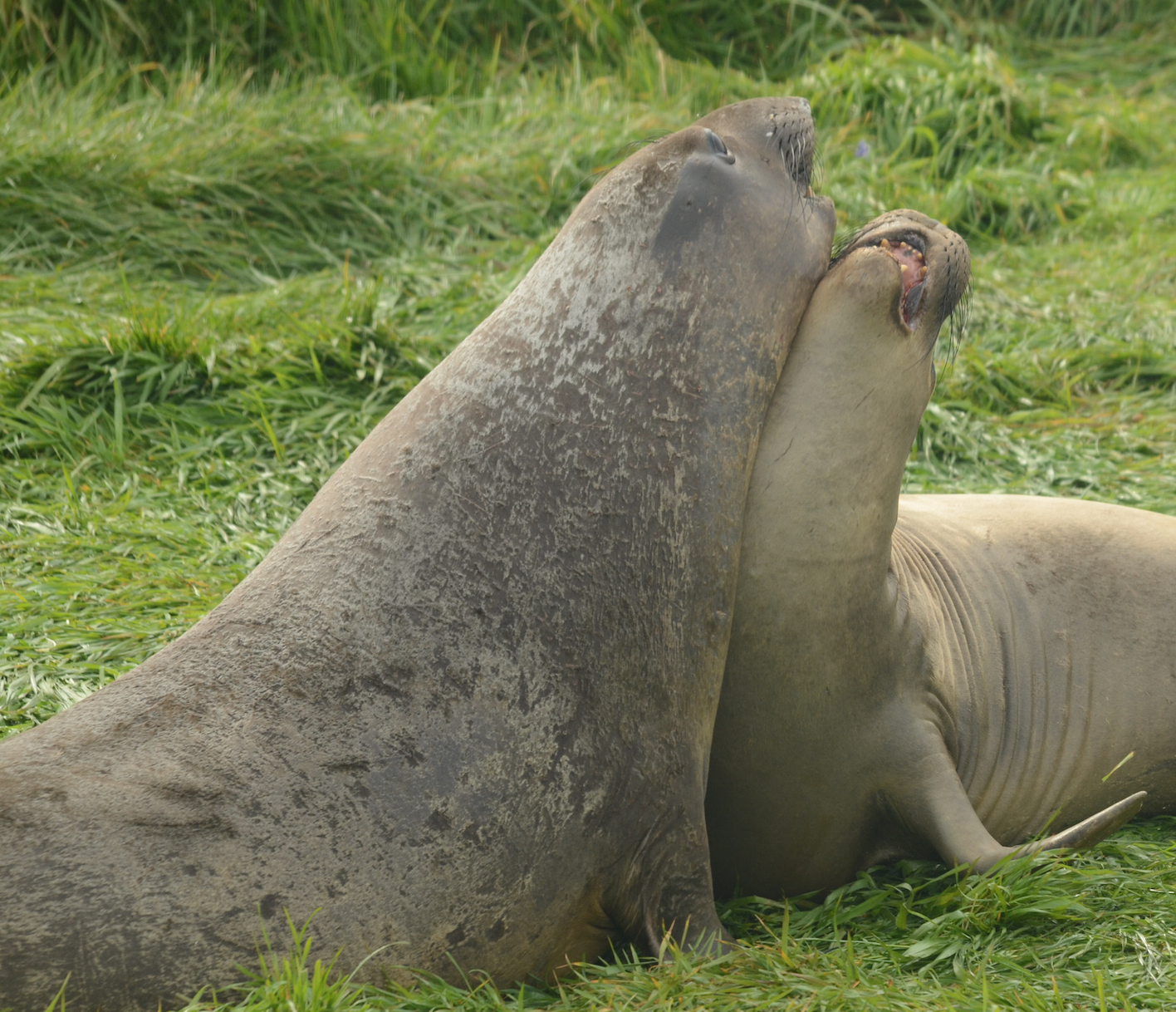
Young male Northern Elephant Seals practicing for battle. One can see why size matters in this game.
The Mist Maidens, which I mentioned a few days ago, are a rare plant found on Race Rocks and they seem to be doing really well. They don’t live in places frequented by the elephant seals so are safe from that threat. I will repeat Courtney’s documentation protocol in May to confirm or deny my qualitative impression that they are doing well.
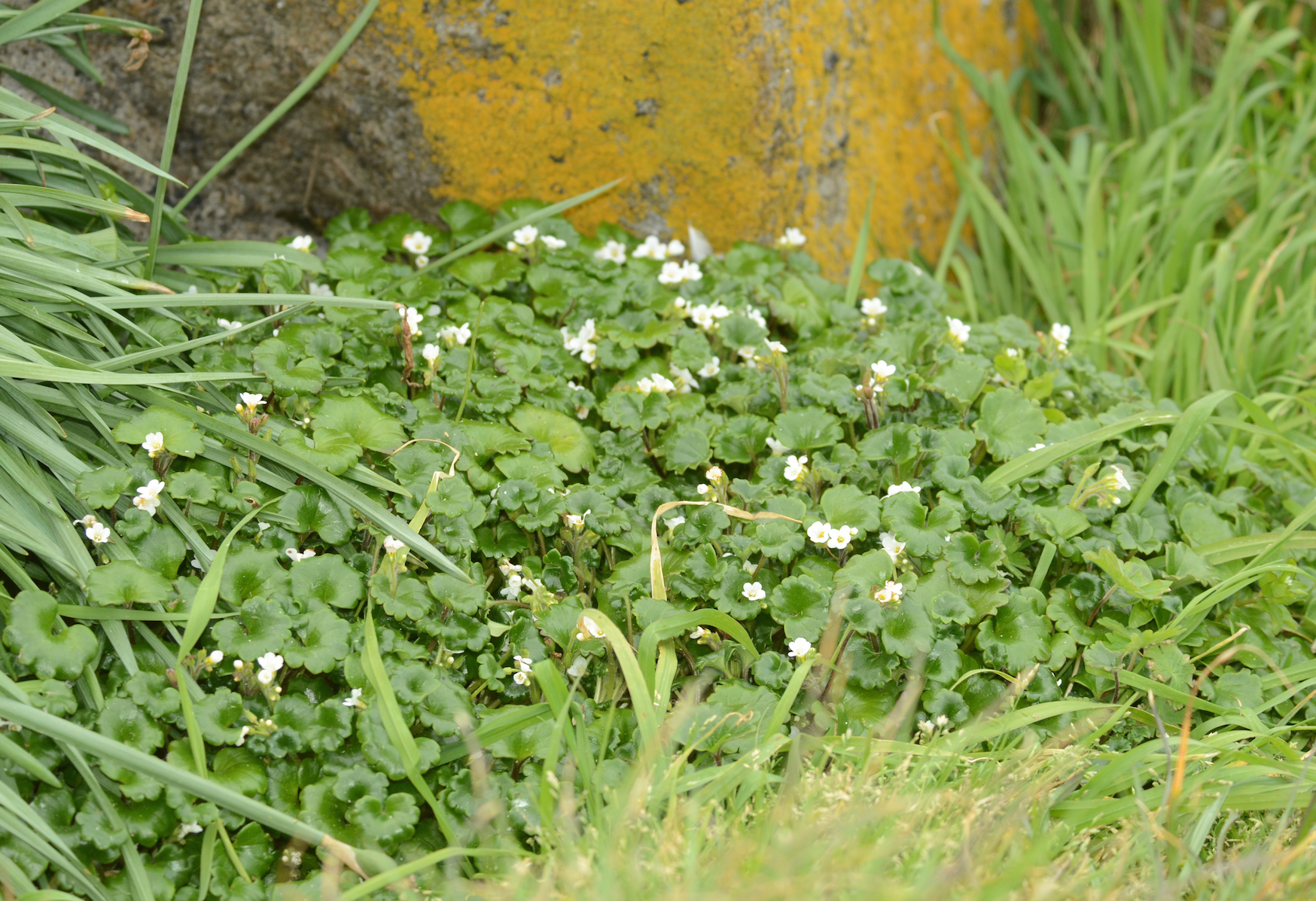
Tracy’s Mist Maidens, or Romazoffia tracyi is a rare plant that appears to be making a come-back on Great Race Island in the Race Rocks Ecological Reserve. It is an early bloomer with delicate white flowers.
The solar panels did not put out much energy today as could be expected from the low light levels. I had to start the generator early and run it a little longer, due to low solar power. It would really be great to have a small, bird-impermeable, wind generator for days like today and to supplement, the rest of the time, as it is usually windy here.
Other than the daily chores, I concentrated on risk mitigation today starting with locating and going through first aid kits. I tried to order first aid supplies and started a health, safety and environment risk mitigation report.
